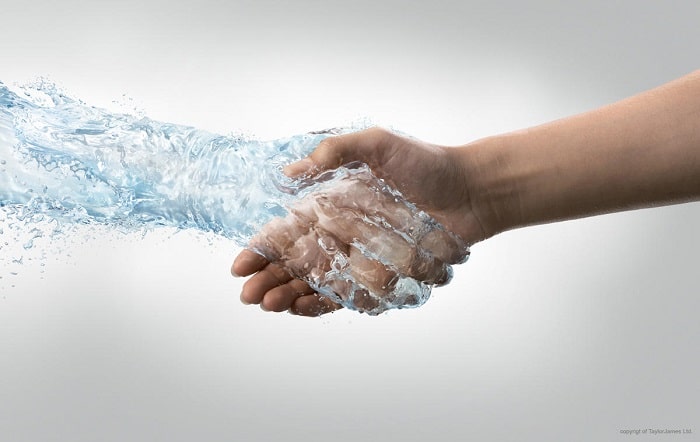SHARE THIS ARTICLE

General Public
What is Hyperhidrosis?: Symptoms, Causes & Treatment
Jun 15, 2018
What is hyperhidrosis?
The usual sweating process—also known as perspiration—is necessary to not only maintain normal body temperature, but also for eliminating disease-causing toxins and killing potentially harmful microorganisms that cannot survive in temperatures above 37°C as well as those on the surface of the skin. The 2 situations that will stimulate the activity of sweat glands are physical heat and emotional stress. While the former induces an intense sweating throughout the body, emotional stress will cause sweating that is restricted to the palms, armpits, soles of the feet, and sometimes the forehead. Hyperhidrosis is a disorder that is used to describe individuals who sweat excessively and abnormally than what is required for the normal regulation of body temperature. Patients may develop this frustrating condition during early childhood or even during adolescence, resulting in deteriorated quality of life.
Hyperhidrosis causes
The 2 categories of hyperhidrosis are:
Primary Focal Hyperhidrosis: This disorder is not caused by any underlying disorders nor is it an aftereffect of certain medications. Primary Focal Hyperhidrosis is a medical condition itself and is characterised by excessive sweating in specific areas of the body. The sweating also tends to occur symmetrically whereby both the left and right sides of the body are equally affected. The most common focal areas include the palms of hands, soles of the feet, underarms, and the face. Most patients develop this type of hyperhidrosis during their early childhood or even during their adolescence. Unfortunately, the exact pathophysiology of Primary Focal Hyperhidrosis is unclear and require a lot more research for better understanding. However, it has been shown that this disorder could be caused be genetics as many members of the same family may suffer from excessive sweating too.
Secondary Generalized Hyperhidrosis: This type of excessive sweating is caused by an existing medical disorder or can be an undesirable side effect of a prescribed medication and/or supplement. Some examples of health conditions that give rise to excessive perspiration include obesity, menopause, nerve damage, endocrine disease, heart disease, stroke, infectious diseases, and spinal cord injuries. Medications and/or supplements that could induce uncontrollable sweating include antihypertensive medications, cancer treatments, diabetes drugs, and zinc and iron supplements. As opposed to sweating in focal areas, patients diagnosed with secondary generalised hyperhidrosis experience sweating in large areas of the body. They also sweat profusely while sleeping. Not only that, this condition also occurs during adulthood.
Symptoms of excessive sweating
The physical symptoms of hyperhidrosis are frequent sweating, clammy or wet palms, clammy or wet soles of the feet, noticeable sweating that soaking through clothing, and recurrent or painful skin problems i.e. fungal or bacterial infections. Patients suffering from excessive sweating may worry about body odour and stained clothing. They may also be reluctant to make physical contact, be socially-withdrawn, and may suffer from depression.
What is the treatment to manage hyperhidrosis?
Prescription-strength anti-perspirants: More often than not, anti-perspirants are regarded as the first line of treatment against excessive sweating. The active ingredient that is found in regular sweat-control deodorant is aluminium chlorohydrate. However, hyperhidrosis requires an anti-perspirant with higher amounts of said ingredient. Once applied topically, deodorant mixes with the sweat to produce superficial plugs in the pores. The body will then sense blocked sweat ducts and stops the production of sweat, albeit temporarily.
Medications: A type of oral medication known as anticholinergic (e.g. propantheline, oxybutynin, methantheline, benzatropine, etc.) is usually prescribed to patients with excessive sweating. It functions by blocking the activity of neurotransmitter acetylcholine in the central and peripheral nervous system. Though its use in treating hyperhidrosis is “off-label,” anticholinergic agents are very effective at reducing the severity of sweating. Unfortunately, they may cause undesirable side effects such as dry mouth, constipation, urinary retention, and visual disturbances.
Procedures: A procedure that is steadily garnering interest due to its efficacy in treating hyperhidrosis is injections of Botox, Xeomin or Dysport, also known as botulinum toxin type A. This potent neurotoxin is extracted biotechnologically from fermented bacterial cultures before it is purified to contain only the therapeutic quantity of toxin. Once injected into the skin, the Botox toxin blocks the secretion of neurotransmitter, resulting in temporary cessation of sweat production. Botox is one of the most well known and long lasting solutions for this issue. Some patients even choose to buy Botox for cosmetic purposes from the same medical clinic so they can have all their Botox treatments at the same time.
Surgery: As a last resort, patients may choose to undergo surgery to remove sweat glands permanently. Some of the usual surgical methods of removing sweat glands are through suction, retrodermal curettage, and axillary liposuction. Another surgical option is via Endoscopic Thoracic Sympathectomy (ETS), which clamps, cuts, or burns the thoracic ganglion that runs along the spine. Although surgical procedures have a high satisfaction rate (80%) among patients, they are still at risk of developing the original sweating problem due to nerve regeneration.
*Disclaimer: Information on Maylips.com is provided for informational purposes only. Self-medication is strictly prohibited. All aesthetic procedures should be provided by the licensed healthcare specialist after the consultation with the personal therapist. The information in this article should not be used for prescribing any medication for the beauty injections.
All brand and medication descriptions in the article are based on the personal opinion and are not endorsed by Maylips.com. The article content was not reviewed for medical validity. Use this article for information and not for a final decision on the procedure.

